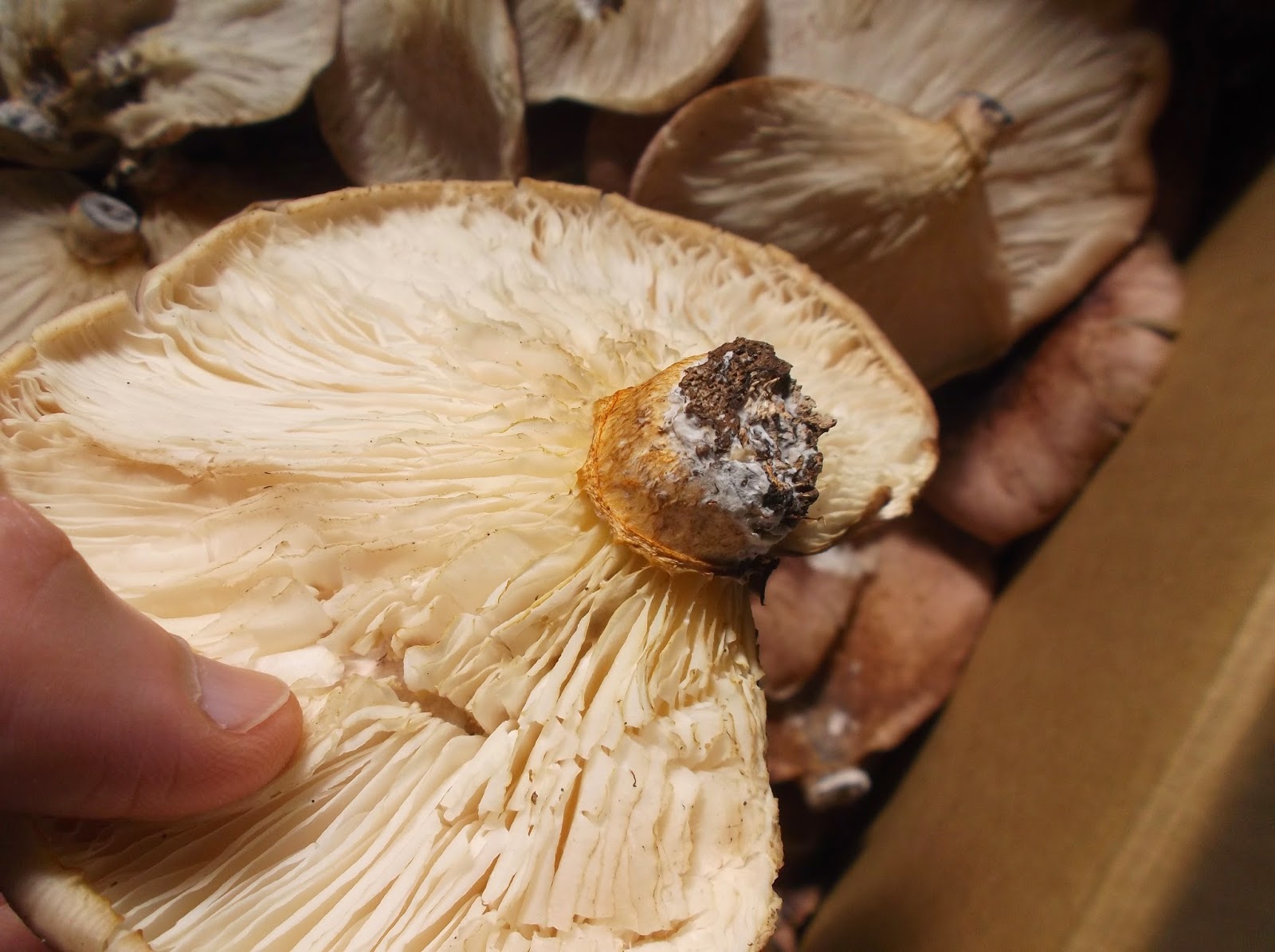The present scientific name of tsukiyotake is Omphalotus guepiniformis, but the older name, Omphalotus japonicus, can also be found.
General:
Cap: Semi-circular or kidney-shaped, 8-25 cm in diameter.
Has small scales.
Yellow- or orange-brown first; later purple-brown
Gills: White
Spore print: White
Stem: Short
Has a raised annulus between gills and stem.
When you split it lengthwise, you will see a purple-black stain at the root.
ツキヨタケの現在の学名はOmphalotus guepiniformisですが、古い学名Omphalotus japonicusも見受けられます。
概要:
かさ: 半円形または腎臓形、直径8~25 cm。
小鱗片あり。
黄橙褐色、のち紫褐色。
ひだ: 白色
胞子紋: 白色
くき: 短い
ひだとくきの間に隆起した「つば」あり。
縦に割くと、根元に黒紫の「しみ」あり。
つば:
Stain:
しみ:
Stain of another tsukiyotake
別のツキヨタケの「しみ」
However, take a look at these two photos:
しかし、次の2枚の写真を見て下さい:
For this particular tsukiyotake, the annulus is obscure, so is the stain.このツキヨタケでは、「つば」も「しみ」もはっきりしません。
Tsukiyotake looks like shiitake, mukitake, and hiratake (oyster mushroom).
ツキヨタケは、シイタケ、ムキタケ、ヒラタケに似ています。
Conclusion: Never go mushroom hunting alone. Go with someone knowledgeable about mushrooms.
結論: 決して一人ではキノコ狩りをしないように。キノコに詳しい人と行きましょう。
Edited to add:
Tsukiyotake can be found at the end of summer through fall on dead wood of beech, fir, and other broad-leaved trees.
NOTE: TSUKIYOTAKE AND MUKITAKE CAN BE FOUND ON THE SAME WOOD.
追記:
ツキヨタケは、夏の終わりから秋に、ブナ、ナラなどの広葉樹の枯れ木に見つかります。
注: ツキヨタケとムキタケが同じ木に見つかることもあります。






No comments:
Post a Comment